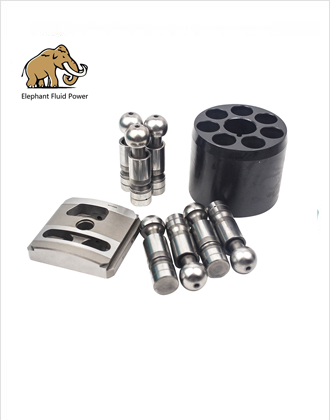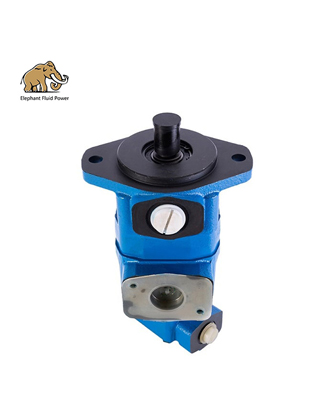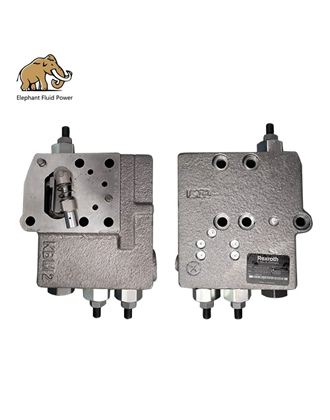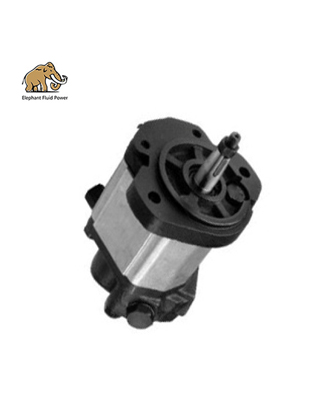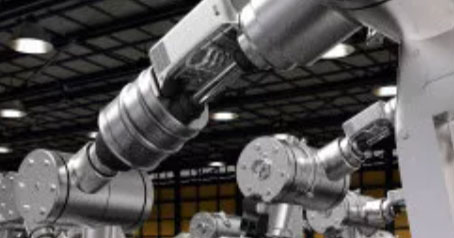Hydraulic systems have become the backbone of modern industries, powering a wide range of machinery and equipment. At the heart of these systems lie two essential components: the hydraulic pump and the hydraulic motor. In this blog, we will delve into the world of hydraulic pumps and hydraulic motors, exploring their functions, types, and their indispensable role in various sectors.
Understanding Hydraulic Pump and Hydraulic Motor
The hydraulic pump is a device responsible for converting mechanical energy into hydraulic energy. It achieves this by pressurizing hydraulic fluid, typically oil, which is then used to transmit power within a hydraulic system. Hydraulic pumps are often considered the heart of the system, as they provide the force necessary to move the fluid through the system. A hydraulic motor, on the other hand, reverses the process by converting hydraulic energy back into mechanical energy. It uses the pressurized hydraulic fluid to generate rotational motion, which can be harnessed to drive various types of machinery, from construction equipment to manufacturing processes.
Types of Hydraulic Pumps
Gear pumps operate by using the meshing of gears to create a flow of hydraulic fluid. They are simple in design, cost-effective, and suitable for applications where precise control isn't the primary concern. Vane pumps utilize sliding vanes within a rotor to create the fluid flow. They offer smoother flow and higher efficiency compared to gear pumps, making them suitable for more demanding applications. Piston pumps use reciprocating pistons to generate hydraulic flow. They are known for their high efficiency, precision, and versatility, and they come in various designs such as axial and radial piston pumps.
Types of Hydraulic Motors
Gear motors use meshing gears to convert hydraulic pressure into rotational motion. They are relatively simple and cost-effective but may lack the precision and efficiency of other types of motors. Vane motors use vanes mounted on a rotor to generate motion. They offer smoother operation and are ideal for applications that require precise control over speed and torque. Piston motors come in axial and radial configurations, utilizing pistons to generate motion. They provide high power output, efficiency, and durability, making them suitable for heavy-duty applications.
Symbiotic Relationship
Hydraulic pumps and hydraulic motors operate in a symbiotic relationship within hydraulic systems. The pump pressurizes the hydraulic fluid, creating a flow that powers the motor, which in turn converts the hydraulic energy back into mechanical motion. This cycle of fluid flow and energy conversion forms the basis of hydraulic machinery's operation. Hydraulic pumps and motors are the driving force behind construction equipment like excavators, bulldozers, and cranes. They provide the necessary power and control to perform heavy lifting, digging, and earth-moving tasks. Hydraulic systems play a vital role in manufacturing processes such as injection molding, metal forming, and assembly lines. Hydraulic pumps and motors enable precise control and consistent motion in these applications.
Proper maintenance of hydraulic pumps and motors is essential to ensure their longevity and optimal performance. Regular checks for leaks, contamination, and wear are crucial. Ensuring that the hydraulic fluid is of the right quality and viscosity is also vital for efficient operation.
 French
French
 Portuguese
Portuguese
 Russian
Russian
 German
German
 Spanish
Spanish
 Japanese
Japanese
 Korean
Korean
 Irish
Irish
 Greek
Greek
 Turkish
Turkish
 Italian
Italian
 Danish
Danish
 Romanian
Romanian
 Indonesian
Indonesian
 Czech
Czech
 Afrikaans
Afrikaans
 Swedish
Swedish
 Polish
Polish
 Basque
Basque
 Catalan
Catalan
 Esperanto
Esperanto
 Hindi
Hindi
 Lao
Lao
 Albanian
Albanian
 Amharic
Amharic
 Armenian
Armenian
 Azerbaijani
Azerbaijani
 Belarusian
Belarusian
 Bengali
Bengali
 Bosnian
Bosnian
 Bulgarian
Bulgarian
 Cebuano
Cebuano
 Chichewa
Chichewa
 Corsican
Corsican
 Croatian
Croatian
 Dutch
Dutch
 Estonian
Estonian
 Filipino
Filipino
 Finnish
Finnish
 Frisian
Frisian
 Galician
Galician
 Georgian
Georgian
 Gujarati
Gujarati
 Haitian
Haitian
 Hausa
Hausa
 Hawaiian
Hawaiian
 Hebrew
Hebrew
 Hmong
Hmong
 Hungarian
Hungarian
 Icelandic
Icelandic
 Igbo
Igbo
 Javanese
Javanese
 Kannada
Kannada
 Kazakh
Kazakh
 Khmer
Khmer
 Kurdish
Kurdish
 Kyrgyz
Kyrgyz
 Latin
Latin
 Latvian
Latvian
 Lithuanian
Lithuanian
 Luxembourg
Luxembourg
 Macedoniar
Macedoniar
 Malagasy
Malagasy
 Malay
Malay
 Malayalam
Malayalam
 Maltese
Maltese
 Maori
Maori
 Marathi
Marathi
 Mongolian
Mongolian
 Burmese
Burmese
 Nepali
Nepali
 Norwegian
Norwegian
 Pashto
Pashto
 Persian
Persian
 Punjabi
Punjabi
 Serbian
Serbian
 Sesotho
Sesotho
 Sinhala
Sinhala
 Slovak
Slovak
 Slovenian
Slovenian
 Somali
Somali
 Samoan
Samoan
 Scots Gaelic
Scots Gaelic
 Shona
Shona
 Sindhi
Sindhi
 Sundanese
Sundanese
 Swahili
Swahili
 Tajik
Tajik
 Tamil
Tamil
 Telugu
Telugu
 Thai
Thai
 Ukrainian
Ukrainian
 Urdu
Urdu
 Uzbek
Uzbek
 Vietnamese
Vietnamese
 Welsh
Welsh
 Xhosa
Xhosa
 Yiddish
Yiddish
 Yoruba
Yoruba
 Zulu
Zulu

